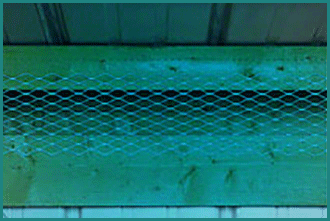Pest Control Steel Buildings Enclosed Garages Barns
◊ Pest Control Steel Buildings
Phone 386 277 2851 Fax 386 277 2852
Keep out Pest
As you may know, when birds start nesting in your building, they become destructive pests that can interfere with the appearance and performance of your machinery or possessions.
If you are housing horses or livestock, birds can contaminate their water or their food, which could lead to potential health issues.
Control Netting
To discourage nesting, We can instal a 2 x 2 lumber bird blocking behind each column in

Pest Controll
every Metal building we construct. This bird blocking helps to eliminate nesting in the sidewalls, which reduces the bird population in your building.
To provide additional protection and to further eliminate favorite nesting areas, We also offers the optional installation of bird mesh wire.
When installed in the ridge vent and between the roof and sidewalls, our bird protection significantly reduces overhead nesting.
This, along with Our Metal Buildings sliding door system installed with a concrete threshold, practically seals the building and does away with bird infestation. At J.C.s Metal Buildings, we want to help you protect your investments.
To determine the building solutions that will work best for you, contact a J.C.s Metal Buildings Sales Consultant.
386-277-2851 Free Structure Quote
History
Pest control is at least as old as agriculture, as there has always been a need to keep crops free from pests. In order to maximize food production, it is advantageous to protect crops from competing species of plants, as well as from herbivores competing with humans.
The conventional approach was probably the first to be employed, since it is comparatively easy to destroy weeds by burning them or plowing them under, and to kill larger competing herbivores, such as crows and other birds eating seeds. Techniques such as crop rotation, companion planting (also known as intercropping or mixed cropping), and theselective breeding of pest-resistant cultivars have a long history.
In the UK, following concern about animal welfare, humane pest control and deterrence is gaining ground through the use of animal psychology rather than destruction. For instance, with the urban Red Fox which territorial behaviour is used against the animal, usually in conjunction with non-injurious chemical repellents. In rural areas of Britain, the use of firearms for pest control is quite common. Airguns are particularly popular for control of small pests such as rats, rabbits and grey squirrels, because of their lower power they can be used in more restrictive spaces such as gardens, where using a firearm would be unsafe.
Chemical pesticides date back 4,500 years, when the Sumerians used sulfur compounds as insecticides. The Rig Veda, which is about 4,000 years old, also mentions the use of poisonous plants for pest control. It was only with the industrialization and mechanization of agriculture in the 18th and 19th century, and the introduction of the insecticidespyrethrum and derris that chemical pest control became widespread. In the 20th century, the discovery of several synthetic insecticides, such as DDT, and herbicides boosted this development. Chemical pest control is still the predominant type of pest control today, although its long-term effects led to a renewed interest in traditional and biological pest control towards the end of the 20th century.
Causes
Many pests have only become a problem because of the direct actions of humans. Modifying these actions can often substantially reduce the pest problem. In the United States, raccoons caused a nuisance by tearing open refuse sacks. Many householders introduced bins with locking lids, which deterred the raccoons from visiting. House flies tend to accumulate wherever there is human activity and is virtually a global phenomenon, especially where food or food waste is exposed. Similarly, seagulls have become pests at many seaside resorts. Tourists would often feed the birds with scraps of fish and chips, and before long, the birds would become dependent on this food source and act aggressively towards humans.
Living organisms evolve and increase their resistance to biological, chemical, physical or any other form of control. Unless the target population is completely exterminated or is rendered incapable of reproduction, the surviving population will inevitably acquire a tolerance of whatever pressures are brought to bear – this results in an evolutionary arms race.


